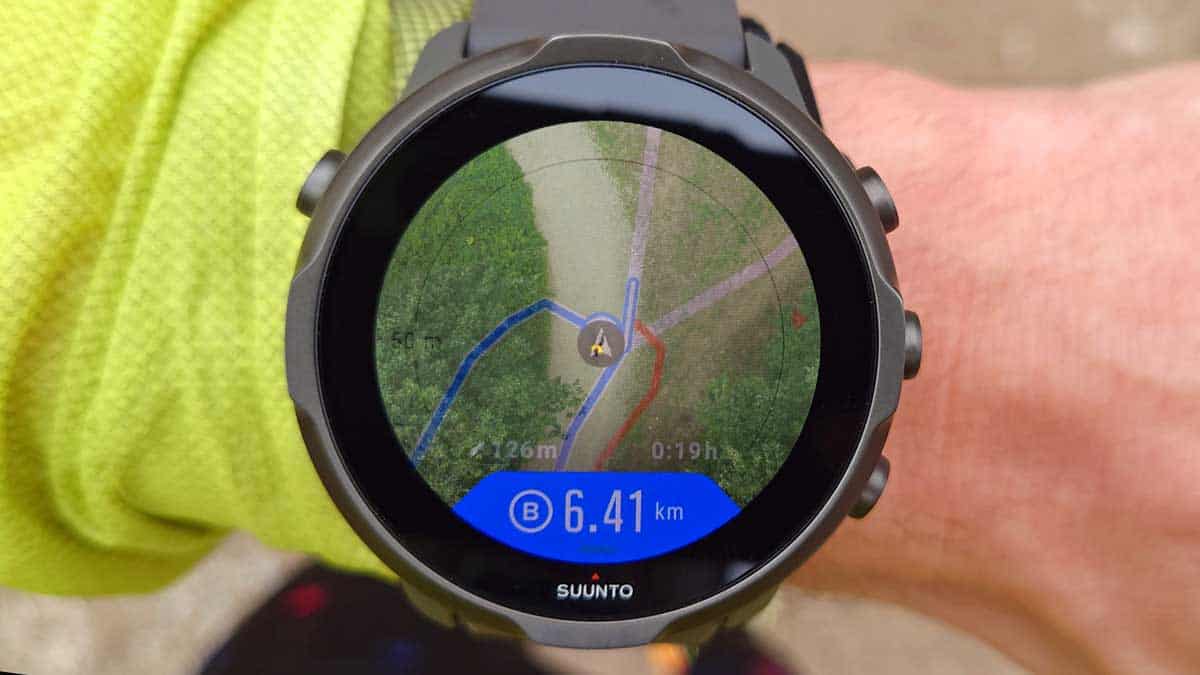The tools we use shape us. One aspect of sports/outdoors watches in which I have noticed this a lot is with GPS watch navigation.
Somewhat ironically, it was the Suunto 7’s great maps and questionable battery life – and in the follow-up, the Garmin Enduro’s lack of maps – that made me realize that there was a problem.
“This Watch Doesn’t Route me Without Fail!”
Most of the time, the complaint one hears about sports watches and their navigation capabilities is that they are not exact enough, not helpful enough.
Simply, somehow, not fulfilling the respective person’s expectations in one way or another.
Of course, when things go well, we don’t notice that so much, have no reason to complain – and everything goes without comment. It was just a nice tour, a successful run.
I have had many of those.
With Suunto watches, with Garmin’s, and also with recent Polar watches’ navigation, where issues have been all too noticeable (or had been, until recent updates).

I have also had quite enough runs where some fork in the road was not visible clearly enough in the navigation view.
Or where automatic routing from a map service followed paths which didn’t really exist or didn’t make quite so much sense.
*I* Don’t Navigate Well Enough!
The question we don’t usually ask ourselves:
What does it do to ourselves, our skills, when we just follow the line of a route on a watch screen? When we wait for a watch to beep turn-by-turn directions at us?
The Suunto 7 has great maps which can be really helpful for going out and exploring.

It can show a very nice route navigation view on top of those maps, too.
At the same time, for longer tours, you will want to avoid constantly looking at the map screen to avoid having the device run out of battery.
*This* Is How I Get Navigated?
All that made me notice how I will, often, run routes with other watches with the navigation screen constantly visible, checking every few minutes (if not seconds) that I am still on the planned course.
I switch off most of my own thinking about the route – happy as I may be whenever I see trail markers while following a route in the mountains – and just follow the trail in front of me and the line on the watch screen.
With turn-by-turn directions, this only gets more mindless.

Navigating like that, I’ll check forks in the road only if there was no beep for them.
It is meditative (and somewhat nice in that respect), but it is also thoughtless and disrupted when there are beeps for directions that seem less sensible.
Breaking the Mindless Habit of Getting Navigated
With the Suunto 7, trying to conserve battery, I tried to check the path ahead and remember the essentials of how it would continue, then go on without a look at the map.
Only at critical intersections would I check with a look at the watch’s map screen.
This is the device – and the use – to have a route planned for some safety, perhaps, but mainly to go out and explore.
To follow actual paths.
To decide which way looks nicer, on the ground and on the map, in practice, on a run… and to just go.
Of course (with or without maps on your wrist, depending on maker and model of watch), you could always do that. But, you got to do that.
Active Navigation
That way, GPS watch navigation becomes a much more active process.
I find myself wanting to have more awareness of where I am, to pay more attention to my surroundings and to my location on my own mental map of my position.

Knowing Paths
Next step – or actually, a previous step only now getting more attention: Less automatic routing when planning routes, more attention to the plan, to the map, before ever going out.
After all, there are always other paths that might be interesting.
Only actual maps and a closer look at them brings the awareness of them, the learning.
Loading a gpx and thinking that’s done… That is a path to worse mental maps of the world and fewer navigation skills.
Sure, we like to outsource some cognitive burdens.
My next ultra, I will be more than glad to have a route gpx loaded on my watch. Hopefully, one that still works well when I’m somewhere on a mountain and unsure of everything.
The next outing for fun, exploration, learning more, though, I will try to keep better track of where I am myself, in my mind.
A watch should be a tool, after all. Not a crutch without which we can ultimately not move anymore.



Leave a Reply